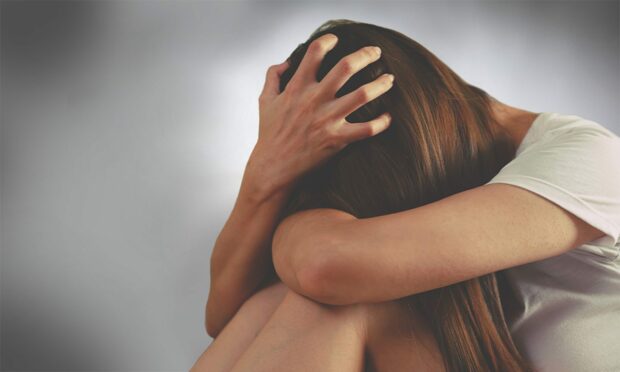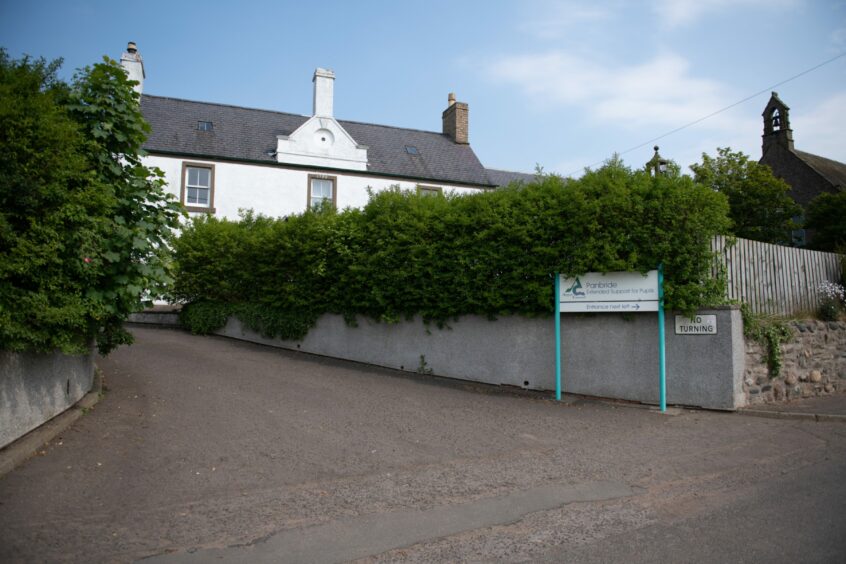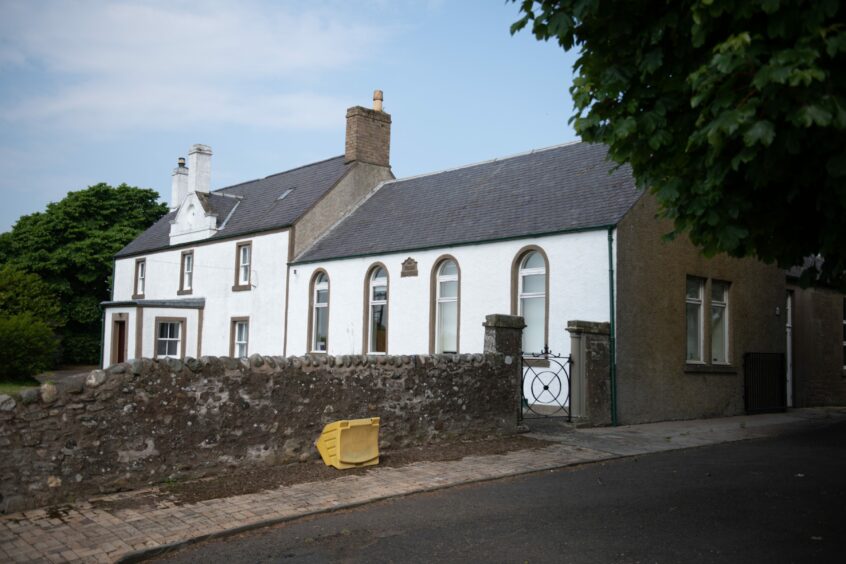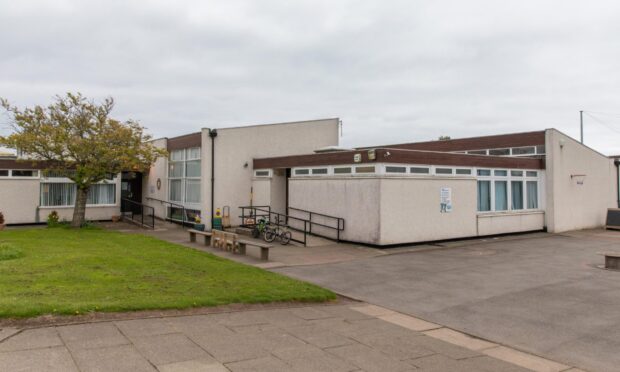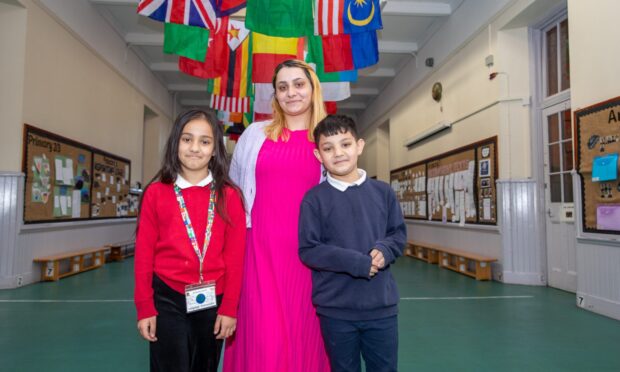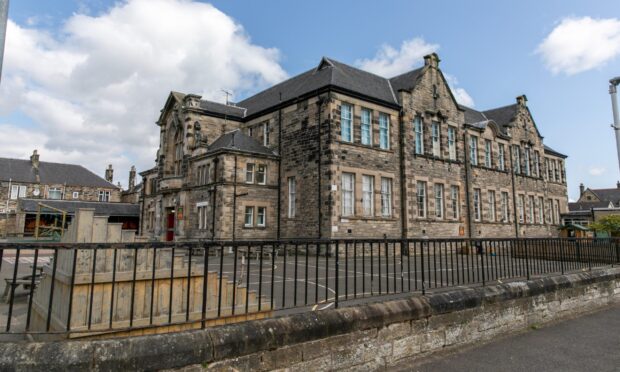Hannah would refuse to get out of bed and scream at her parents as they tried every trick to persuade her to go to school.
When she did get on the bus, she’d often send a barrage of texts begging them to leave work and come and collect her.
Her school attendance dropped to a couple of days a week. Then she stopped going altogether.
Hannah, 17, not her real name, is among 283 Angus secondary pupils to have missed at least half of their schooling last year.
She suffers from extreme anxiety – a common cause of what is often termed school refusal or emotionally-based school avoidance.
But a place at Panbride – an Angus Council service for pupils struggling with mainstream school – got her back into education and gaining qualifications.
Hannah’s mother told us of the ordeal of trying to find a solution for her daughter and how finding Panbride provided a turning point.
During primary school, Hannah had had some issues with her peers but it was only during her first S1 parents’ night that her parents realised something more may be amiss.
Her mum said: “She got reports back from some teachers of being somebody who wasn’t engaged and actually was quite disruptive and that wasn’t the kind of report that we had ever had. And so it made me wonder ‘what’s wrong here?’
“Then it was when she got into S2 that she started refusing to go.”
There would be rows as her parents tried to persuade Hannah to get ready for school.
“First thing in the morning we’d try to get her out of bed and she’d be screaming back at us,” her mum said.
Her parents tried every trick to get Hannah to go to school, playing ‘good cop, bad cop’ or telling her she would let people down if she didn’t go.
Symptoms of school anxiety
Hannah would feel ill and complained of pain so acute that an MRI scan was arranged.
“When we did get her to go in it was such a relief, but we would also feel we had forced her and it didn’t sit well with me.”
It was at the conclusion of this scan that her family began to accept that there was a serious mental health issue at play.
Her mum said: “The consultant said ‘I don’t think the MRI is going to show anything, I think her pain is actually being driven by anxiety’.
“That was the first time that had been verbalised and we started unravelling it all.”
Hannah admitted she was struggling emotionally but was unable to pinpoint the cause of her distress.
By then, she was going to school only around two days a week.
Her mum said: “When we did get her to go in it was such a relief, but we would also feel we had forced her and it didn’t sit well with me.
“But you’re juggling, you have your own job and your responsibilities.”
On the days Hannah would go, text messages would begin while she was still on the bus and her parents on their way to work.
Her mum said: “You could have as many as 60, 70 quick fire texts, like ‘I need to come home’, ‘you need to come and get me’, ‘I’m not good’.”
Hannah described how her mind would race with questions – What will happen on the bus? Will someone be sitting in my seat? Will they say something to me? Will this or that happen when I get to school? Will I find my friends? Will I not? Who will I go out with at lunch? How will I get on in the classroom?
Her parents were caught in a cycle of guilt and frustration, reluctant or sometimes physically unable to go for her and worried they would lose her trust if they didn’t.
But soon, Hannah wasn’t going to school at all.
Long waiting times for mental health support from CAMHS
Shortly after her MRI scan, Hannah was placed on the lengthy waiting list for NHS Tayside’s Child and Adolescent Mental Health Service (CAMHS) and it was almost two years before she was finally seen.
In the first quarter of this year 10,556 children and young people were referred to CAMHS across Scotland and 467 had been waiting for more than a year for an appointment.
Hannah’s mum found this period of waiting a real struggle. She said: “There’s no clear road map of what it is that you’re meant to do to get help.
“I would have paid money to anybody that could have helped but there just isn’t anyone. You just have to wait.”
For most of 2021 Hannah missed school and her mother attended a series of meetings with school staff and mental health professionals as they tried to find a solution for her.
More in our school refusers series:
- Dundee teenagers reveal why they won’t – or can’t – go to class
- Autistic Fife teenager Alannah missed her entire final year
- Fife counsellor says bullying and violence can make children too scared to go to school
- The Dundee teachers helping teenagers so anxious they are housebound
- The law and advice for when kids won’t go to class
It was at yet another of those meetings that an educational psychologist suggested Panbride.
A support teacher visited the family. Hannah’s mum said: “She asked ‘do you think Hannah would come in?’ I said ‘no, not in a million years’ but to surprise us all Hannah did go.
“She started going in once a week and then gradually that increased and she started to reconnect with her learning.”
Panbride: Angus Council’s school alternative for anxiety
Hannah’s mum thinks it was the environment of Panbride that made the difference.
“It was away from the pressures of school. It was very relaxed, she could wear anything she wanted, she could have her earphones in if she wanted, and there were fewer people.
“She had also been isolated from everybody else her own age. We were the only people she saw all the time.
“So it was an opportunity to meet some other people her own age.
“I remember her saying to me ‘what if I’ve forgotten how to make friends?’”
Hannah’s attendance at Panbride improved and her parents were delighted when she passed National 5 exams.
She has now left school and is continuing mental health treatment while awaiting assessment for a possible autism diagnosis.
Reflecting on the last few years, her mum said: “It’s been one of the most difficult things we’ve ever had to face and has impacted on the whole family.”
But she was relieved her own professional management skills allowed her to hold her ground in meetings and fight for the best outcome for her daughter – something other parents might find more difficult.
She said: “It became like a second job, which is a ridiculous situation.”
How does Panbride help pupils?
Panbride, based in the former Panbride Primary School building near Carnoustie, is an extended support service (ESP) provided by Angus Council for secondary school pupils experiencing significant barriers to learning in mainstream schools.
It is mostly used by S3 and S4 pupils who are provided with individual learning plans, which can include the Duke of Edinburgh and Prince’s Trust award programmes.
A spokesperson for the service said: “ESP at Panbride is a shared care arrangement between the young person’s school and the assisted support needs service locality team, education and lifelong learning.
“Young people remain on the school roll and links are maintained with the mainstream setting, based on a young person’s needs, as detailed in their individual plan.
“The child’s plan will detail multi-agency interventions and outcomes sought in relation to improving attendance, wellbeing, engagement in learning, and wider achievements.
“Young people attending Panbride are supported towards positive destinations and outcomes including re-engaging with their mainstream setting, supporting access to further education programmes and towards employment opportunities.”
